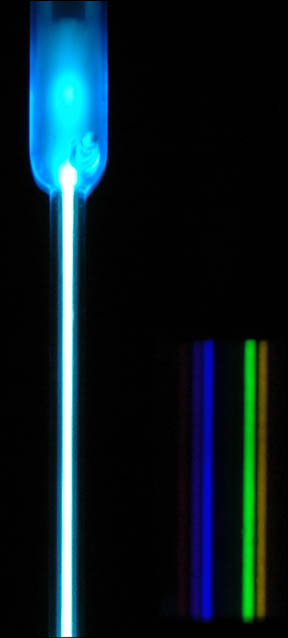Objective: Measure the properties of a converging lens observe the characteristics of images created by converging and diverging lenses.
Lab Equipment:
- Socket Lamp with V-shaped filament (filament is asterix-shaped)
- converging lens
- object (large hanging mass)
- masking tape
- lens holder
- large piece of cardboard (or other dark material)
- meter stick
Lab Procedure:
Part 1:
1) Obtain a converging lens and measure the focal length using a light source (the sun) located very long distance from the lens.
2) Place the lens in the lens holder on the table. position the lens holder about four focal lengths away from the filament. Move the cardboard screen in the path of the light which has passed through the lens. Move the cardboard screen back and forth until a sharp image occurs. Record the distance between each object and other observations specified in the lab manual.
3) Reverse the lens and note any changes in the image.
4) Repeat this process with the lens placed 2 focal distances and 1.5 focal distances away from the filament.
Data:
f = focal length, di = image distance, do = object distance, hi = image height, ho = object height,
M = magnification = (hi)/(ho)
1) do = 60 cm, di = 21 cm, ho = 9 cm, hi = 3 cm, M = 0.333
The image is real and inverted. When the lens is reversed all previous measurements of the image remain the same.
2) do = 30 cm, di = 31 cm, ho = 9 cm, hi = 9 cm M =1.00
The image is real and inverted. When the lens is reversed all previous measurements of the image remain the same.
3) do = 22.5 cm, di = 46 cm, ho = 9 cm, hi = 17.5 cm, M = 1.944
The image is real and inverted. When the lens is reversed all previous measurements of the image remain the same.
4) When half of the lens is covered in masking tape the image becomes much dimmer, but the shape and orientation of the image remain intact. We think that this occurs because every individual point on the lens projects the entire image out into the opposite side. covering any part of the lens will simply decrease the intensity of light going through.
Part 2:
1) Place a distinguishable object in front of a light source.
2) Using the same lens as in part 1, place the lens 5 focal lengths away from the object.
3) Measure the image distance, image height, and determine the type of image and its inversion.
4) Repeat for a lens placed 4, 3, 2, and 1.5 focal lengths away from the object.
Data:
f = focal length, di = image distance, do = object distance, hi = image height, ho = object height,
M = magnification = (hi)/(ho)
f = 15 cm
1) do = 75 cm, di = 18.5 cm, ho = 11.5 cm, hi = 2.5 cm, M = 0.217
2) do = 60 cm, di = 20 cm, ho = 11.5 cm, hi = 3 cm, M = 0.261
3) do = 45 cm, di = 22.5 cm, ho = 11.5 cm, hi = 4 cm, M = 0.348
4) do = 30 cm, di = 28 cm, ho = 11.5 cm, hi = 7 cm, M = 0.609
5) do = 22.5 cm, di = 35 cm, ho = 11.5 cm, hi = 10 cm, M = 0.870
in each of these trials the image was inverted and real.
when the object distance is decreased to a level below the focal length, the image is virtual and is not inverted.
















































